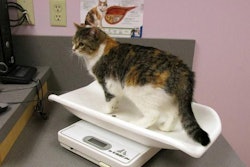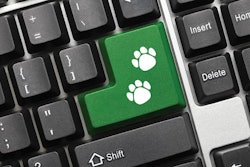
Despite the growing popularity of pet food formats like raw, freeze-dried, baked and similar products, dry, extruded pet food still rules globally. That’s one reason it’s always interesting to see Alltech’s annual global feed survey, which includes data on dry pet food production.
The 2019 survey, based on data from 2018, showed that dry pet food production reached 26.6 million metric tons (MMT), or 2 percent of the total global feed production for all species of 1.103 billion metric tons. While the global total represented a 3 percent increase year over year, pet food’s was only 1 percent – reflecting the growing premiumization of pet food around the world, in which prices and value sales may rise without many more packages or tons of products being sold. In fact, the dry pet food production growth came mainly from a 13 percent rise in the Asia-Pacific region, which helped offset decreases in Latin America and Africa, according to Alltech.
North America’s new pet food lead over Europe
Though production in North America remained relatively flat compared to 2017, it’s now the largest pet food producing region at 8.78 MMT, just edging out Europe at 8.6 MMT. North America’s slight lead actually emerged because Alltech reassessed its data from the past two years, said Mark Lyons, company president and CEO; its 2017 data had indicated Europe was the leading pet food region. As he explained, Alltech is constantly refining and improving its data collection process, which encompasses over 29,000 feed mills in 144 countries, in addition to government sources and feed industry associations.
For the U.S., dry pet food production in 2018 was essentially the same as 2017: 8.085 MMT. That pet food market’s continued sales growth is the quintessential example of premiumization’s influence. Still, the U.S. production volume, combined with Canada’s of 0.7 MMT, accounts for 33 percent of the global pet food total, while Europe’s share is 32 percent.
In Europe, most of the dry pet food production comes from European Union member countries, with the U.K., France, Hungary and Germany leading at 1.37 MMT, 1.2 MMT, 1.2 MMT and 1.02 MMT, respectively. Hungary’s inclusion in that list may be somewhat surprising. Its pet food production continues to grow, and the volume in 2017, 1.1 MMT, represented 30 percent of the country’s total feed production that year, according to Alltech. Russia was another Eastern European standout for dry pet food production in 2018, at 0.84 MMT.
Asia-Pacific pet food up, Latin America down
Probably the biggest standout for pet food in 2018 was the Asia-Pacific region. Its 13 percent growth over 2017 happened primarily in four countries: Indonesia, Taiwan, Thailand and Sri Lanka. Though the first three countries are not necessarily a surprise, Sri Lanka certainly is! Still, its dry pet food production reached only 0.012 MMT, compared to 0.99 MMT in Thailand (up from 0.75 in 2017), 0.6 MMT in Indonesia and 0.4 MMT for Taiwan. Southeast Asia specifically accounted for 50 percent of the region’s dry pet food production, Lyons said.
Given economic instability in several Latin America countries, it is understandable that pet food production in that region declined about 5 percent, driven by dips in Chile, Venezuela, El Salvador, Columbia, Argentina and Ecuador. However, large pet food producers like Brazil and Mexico contributed their share, with Brazil at 2.65 MMT and Mexico at 1.06 MMT.

















